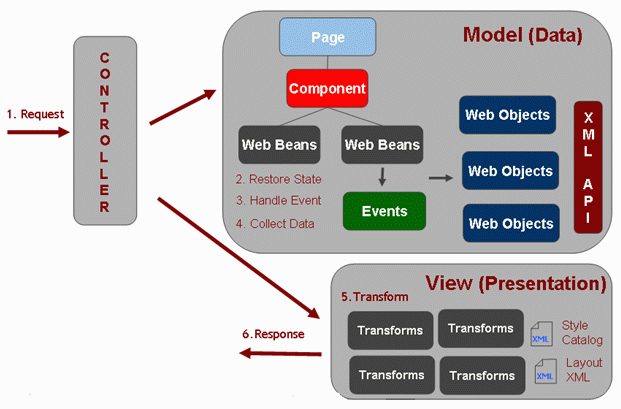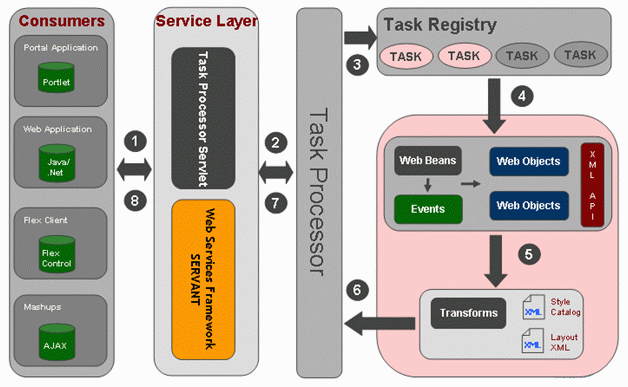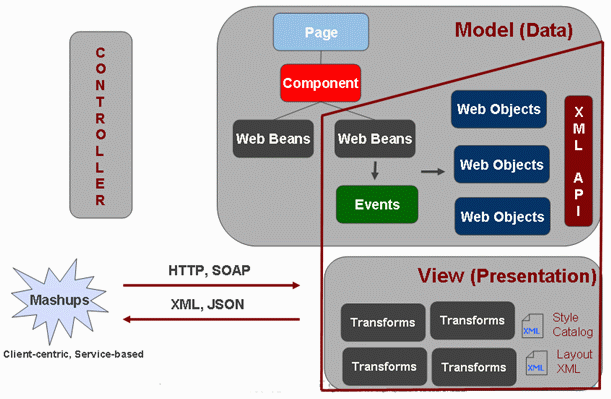Strategy ONE
Overview of the Task Infrastructure
The Task Infrastructure provides the framework for delivering data to highly interactive web applications such as those based on Ajax or Adobe Flex technologies, and it is also the basis for exposing Web Services through the new MicroStrategy Web Services Universal Framework (WSUF). To accomplish this, it relies on MicroStrategy's service-oriented architecture (SOA). The Task Infrastructure is used internally by MicroStrategy to support such important features as Flash dashboards, the FlexBuilder-based Visualization SDK, and MicroStrategy Mobile.
The diagram below illustrates the request-to-response workflow in the standard MicroStrategy architecture.

The Task Infrastructure is designed to respond to a simple request in the fastest way by returning the least amount of data required to satisfy that request. For example, consider an application that provides immediate feedback on the list of attribute elements that begin with a specific letter (or letters). Such an application is intended to be highly interactive—returning matches dynamically as the user makes selections. Using the Task Infrastructure, a single task can be defined to quickly and efficiently generate only the list of attribute elements that begin with a specific set of letters. It can do this because tasks, supported by the Task Infrastructure, provide a way to update a subset of the content on a web page, as an alternative to returning the contents of an entire page. This content can be returned in a number of formats, including XML and JSON (JavaScript Object Notation).
The next diagram illustrates the request-to-response workflow using the MicroStrategy Task Infrastructure.

The Task Infrastructure provides a loosely coupled mechanism for client-centric/services-based client applications to access MicroStrategy data and functionality. It was designed for performance, meeting the demand for responsiveness and speed which are key requirements in the interactive and collaborative environment of the “programmable” Web. The Task Infrastructure allows you to take advantage of cross-platform technologies such as Silverlight, Ajax, JSON, Flex, and Web Services to build Rich Internet Applications, mashups, and other composite applications. It leverages the ability of these Web 2.0 technologies to exchange small amounts of data with the server without requiring an entire web page to be reloaded each time a request is made and data is retrieved from the server. The end result is improved interactivity, speed, functionality, and usability.
The final diagram illustrates how the Task Infrastructure fits neatly into the overall web architecture.

